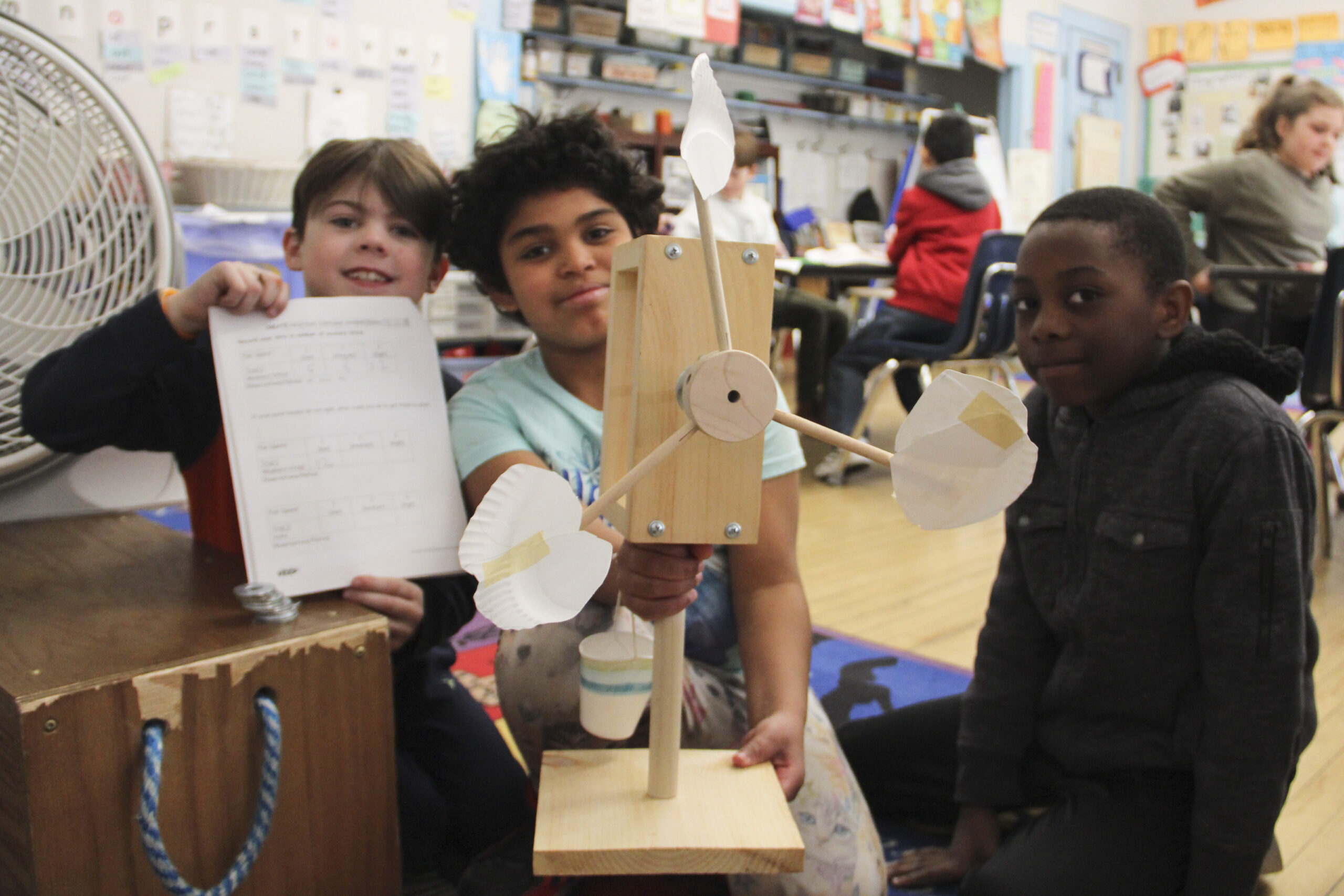$40.00
How do we use wind?
Description
Introduce your youngest students to wind! Wind FUNdamentals is an introductory unit on using wind to do work for K–3 that incorporates engineering principles in engaging, hands-on lessons, using NGSS and Common Core as frameworks. With a focus on being an engineer, students will build, share, and redesign models to understand how we can effectively use wind. Build and test pinwheels and sailboats, and experiment with mechanical wind turbines!
Concept progression:
- Wind is made of air.
- Air is made up of small pieces we can’t see but it weighs something.
- Moving air (wind) pushes objects and interacts with them.
- Because wind pushes, humans can design devices that use wind to move things [pinwheels or sails on boats for grades K-3, windmills for grades 2-3, electricity-generating wind turbines for only grade 3 and above]
- The wind will always blow, sometimes hard and sometimes soft. (It is a renewable resource.)
Student outcomes:
- I can test two types of pinwheels to see which one works best.
- I can design a sail for a boat and use materials for my sail that catch the wind so the boat moves.
- I can design a windmill to accomplish work (lift weight) and modify it to make it work better (improve it).
Free download of the curriculum here.
WHAT’S IN THE KIT?
Kit includes: Box fan, windmills and blades, materials for building wind-powered boats, track for boats, pinwheel patterns, I Face the Wind book, and more.
Kit size: 1 large plastic tote, 1 box fan
Additional information
| Topic | |
|---|---|
| Type of Material | |
| State | |
| Grade Band |
Standards Addressed
NGSS STANDARDS
K-PS2-1 Motion and Stability: Forces and Interactions: Plan and conduct an investigation to compare the effects of different strengths or different directions of pushes and pulls on the motion of an object.
K-PS2-2 Motion and Stability: Forces and Interactions: Analyze data to determine if a design solution works as intended to change the speed or direction of an object with a push or a pull.
K-2ETS1-1 Engineering Design: Ask questions, make observations, and gather information about a situation people want to change to define a simple problem that can be solved through the development of a new or improved object or tool.
K-2ETS1-2 Engineering Design: Develop a simple sketch, drawing, or physical model to illustrate how the shape of an object helps it function as needed to solve a given problem.
K-2ETS1-3 Engineering Design: Analyze data from tests of two objects designed to solve the same problem to compare the strengths and weaknesses of how each performs.
2-PS1-1 Matter and Its Interactions: Plan and conduct an investigation to describe and classify different kinds of materials by their observable properties.
2PS1-2 Matter and Its Interactions: Analyze data obtained from testing different materials to determine which materials have the properties that are best suited for an intended purpose.


